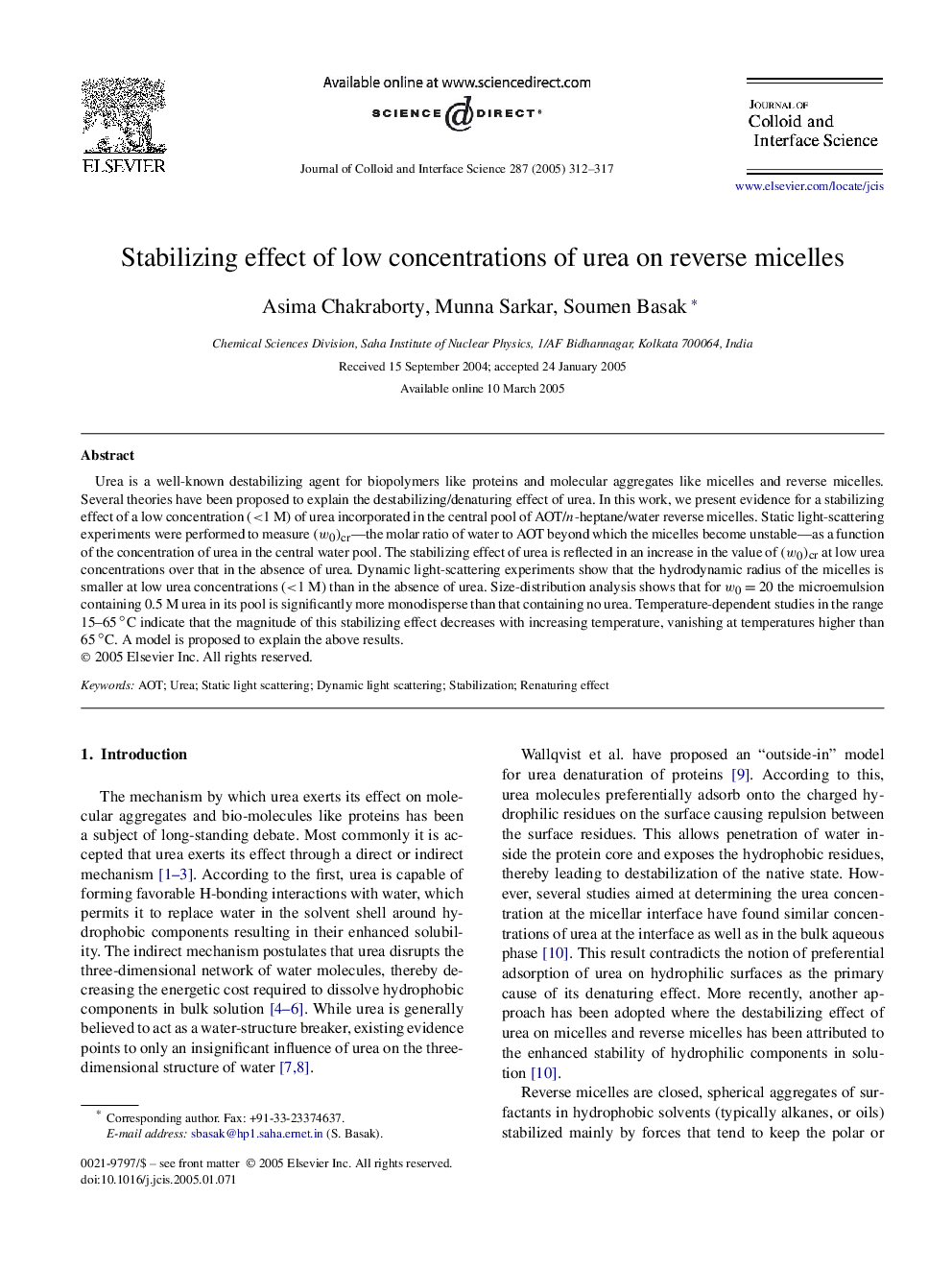| Article ID | Journal | Published Year | Pages | File Type |
|---|---|---|---|---|
| 10378052 | Journal of Colloid and Interface Science | 2005 | 6 Pages |
Abstract
Urea is a well-known destabilizing agent for biopolymers like proteins and molecular aggregates like micelles and reverse micelles. Several theories have been proposed to explain the destabilizing/denaturing effect of urea. In this work, we present evidence for a stabilizing effect of a low concentration (<1 M) of urea incorporated in the central pool of AOT/n-heptane/water reverse micelles. Static light-scattering experiments were performed to measure (w0)cr-the molar ratio of water to AOT beyond which the micelles become unstable-as a function of the concentration of urea in the central water pool. The stabilizing effect of urea is reflected in an increase in the value of (w0)cr at low urea concentrations over that in the absence of urea. Dynamic light-scattering experiments show that the hydrodynamic radius of the micelles is smaller at low urea concentrations (<1 M) than in the absence of urea. Size-distribution analysis shows that for w0=20 the microemulsion containing 0.5 M urea in its pool is significantly more monodisperse than that containing no urea. Temperature-dependent studies in the range 15-65â°C indicate that the magnitude of this stabilizing effect decreases with increasing temperature, vanishing at temperatures higher than 65â°C. A model is proposed to explain the above results.
Related Topics
Physical Sciences and Engineering
Chemical Engineering
Colloid and Surface Chemistry
Authors
Asima Chakraborty, Munna Sarkar, Soumen Basak,
